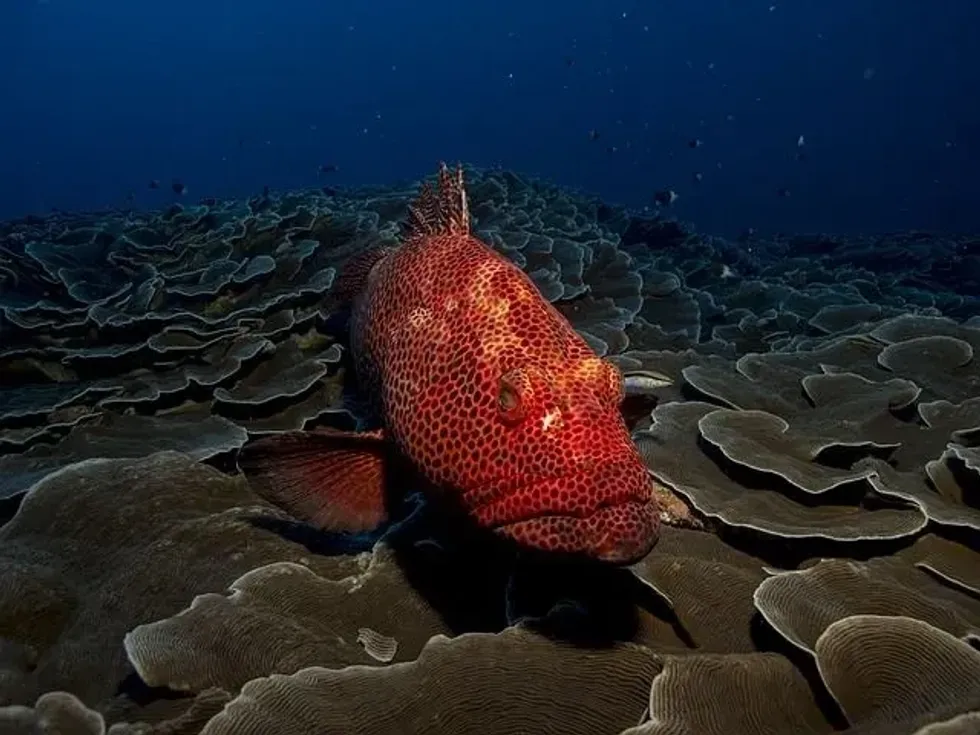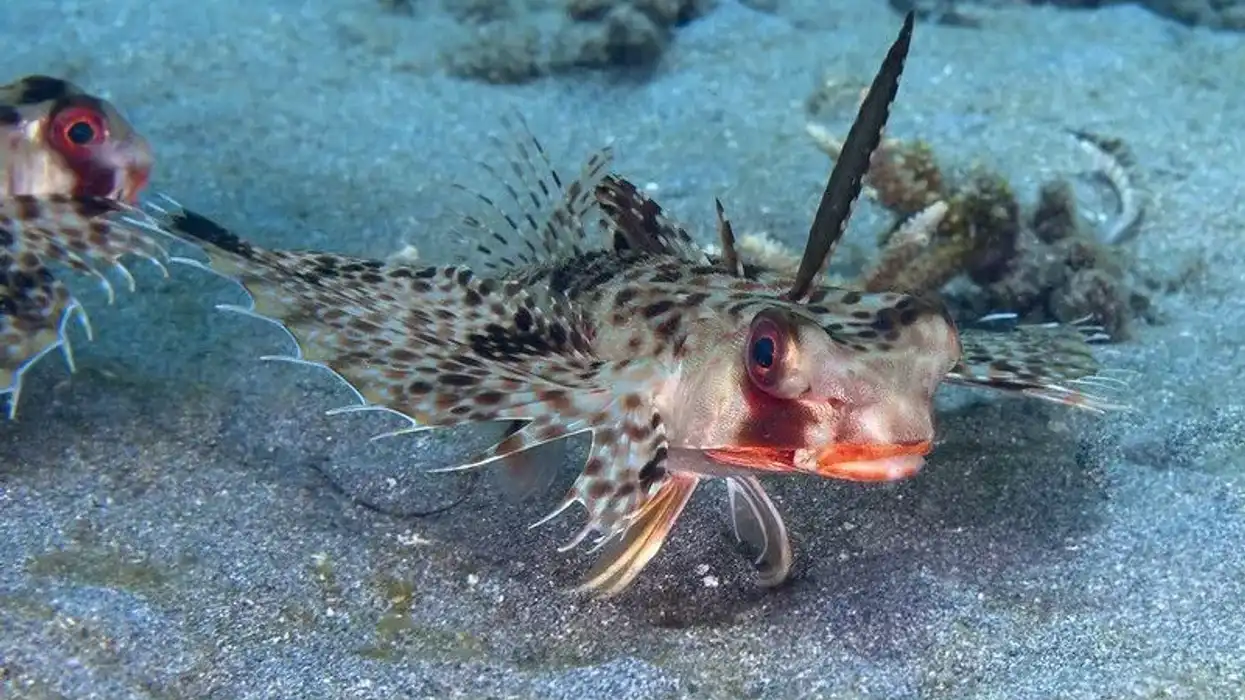The red grouper (Epinephelus morio), a commonly targeted fish of many fisheries, is found in the South Atlantic and the Gulf of Mexico. The population of red groupers can be divided into two sections.
One is the Gulf of Mexico stock and the other one is the South Atlantic stock. In the South Atlantic, these fish are not targeted as much.
However, in the Gulf of Mexico, the red grouper population is at stake. Capturing immature fish is common in commercial and recreational fisheries in the Gulf of Mexico.
Under U.S. regulations, the commercial and recreational size limits in harvesting these marine fish and their annual catch limit have been restricted. In many parts of western Florida, the red grouper's habitat has been invaded by lionfish, starting from Florida Bay to the Florida Keys.
All these have resulted in a decrease in the red grouper size limit of both males and females. The fish stock has also been falling in southern Brazil.
The red grouper species is a protogynous hermaphrodite species that is they can change their sex. All red groupers are born as females.
On reaching sexual maturity at around seven- 14 years most of them change their sex and become males. To know more about red groupers, continue to read these facts.
Check out the articles on lumpfish and bigeye tuna facts too.
Red Grouper Interesting Facts
What type of animal is a red grouper?
A red grouper (Epinephelus morio) is a type of fish.
What class of animal does a red grouper belong to?
Red groupers are ray-finned fishes that belong to the class Actinopterygii, which is the class of all ray-finned and bony fish.
How many red groupers are there in the world?
The current population of red groupers has not been determined but the trend shows a continuous decline of mature individuals which has made them highly vulnerable species. Currently, size limits and the annual catch limit have been introduced in fisheries to protect their stock.
Where does a red grouper live?
Usually, a red grouper habitat is found along the coasts of the western Atlantic Ocean. Their distribution covers a great extent ranging from North Carolina in the United States in the north and descending along the coast further south to Brazil.
They are found distributed throughout the Gulf of Mexico mainly in the western part of Florida, Bermuda, and Cuba in the Caribbean sea. In South America, they extend to Rio de Janeiro in Brazil. However, the fish does not populate the estuaries or river mouths of northwestern Brazil.
Some stray red groupers have been located to the north of Massachusetts. The grouper fishery industries mainly target the adult fish stock of North Carolina, Brazil, and Cuba.
What is a red grouper's habitat?
The red grouper is a bottom-dwelling fish that are found both in offshore areas as well as in the nearshore reef. The adult fish are found on the rocky, muddy, or sandy bottom where they excavate large pits in the sedimented seafloor.
The habitat differs in the case of juvenile fishes. The tinier juveniles might inhabit the inshore reef as small reef fish or sometimes the shallow water beds covered with seagrass.
The comparatively larger red grouper individuals are primarily found to occur in the crevices of a large rocky reef or under a ledge.
They stay at a moderately deep water level ranging from 16-82 ft (5-25 m) below sea level. On reaching maturity the species move into deeper waters ranging from 82-984 ft (25-300 m).
Their breeding is restricted in the waters of the Gulf of Mexico to the months of April and May. However, earlier spawning is observed between the months of February and March in the species of North and South Carolina, and the South Atlantic coast.
Who do red groupers live with?
Groupers are mainly solitary fishes that are found roaming in the deep waters. They aggregate only during the time of spawning. However, the red groupers of the Gulf of Mexico do not show any aggregation even during the breeding season. In other places, it is unknown if the species aggregate or not.
How long does a red grouper live?
The average lifespan of a red grouper is 25 years. However, in the Gulf of Mexico, the highest recorded age of a red grouper was 29 years while in the south Atlantic, the oldest recorded fish was 26 years old.
How do they reproduce?
The spawning season in red groupers starts in January and lasts till June. The spawning peaks in April and May as the water temperature increases and the water becomes warm.
The female reaches sexual maturity at around four or six years old. During spawning season, red grouper males and females release sperm and eggs respectively which are fertilized in the offshore water.
The eggs are fertilized in highly saline water to maintain buoyancy. The eggs hatch around 30 hours after spawning and they are drifted to places by the water current.
After 30-35 days the juveniles separate from the zooplankton and settle in shallow water.
As they mature, their size increases, and they move to deep water areas. In a single spawning season, a red grouper can spawn 26 times.
The red grouper can change its color patterns in the breeding season to attract the opposite gender towards it for example their heads can turn lighter and the white spots become more prominent.
According to the U.S. red grouper regulations, commercial and recreational fisheries are prohibited to fish for this species during their spawning season as a measure to protect their stock with a limited annual catch limit.
What is their conservation status?
According to the International Union for Conservation of Nature Red List, the population of red groupers is considered to be Vulnerable and they are facing gradual threats of extinction. At present, many regulations have been set by the U.S. government to protect them and restrict overfishing by fisheries to regain their population status.
Red Grouper Fun Facts
What do red grouper look like?

The red grouper has a robust and muscular body with small scales. As suggested by the name, the red grouper fish can be easily identified from the other grouper species by its red and rusty body color.
The color of the body gradually transforms from a dark and rusty red around the head and the upper part to a paler and lighter red in the underparts.
By the time the color reaches the belly, it gives off a slight pinkish hue. Some distinct white spots are present all over the body running from the head to the tail and it also has white blotches along the sides.
The fins of the marine species have the same color as its body and are bordered on the edges by a darker margin. Few spines are present around the gill cover and the number amplifies on reaching the dorsal fin.
The caudal fin of the red grouper species looks truncated.
They have a big mouth with the help of which they can eat their prey whole. The lower jaw protrudes slightly beyond the upper jaw.
How cute are they?
The red groupers have very beautiful skin. The color looks unique and gives off a wonderful glow. They are considered to be a delicacy because of their taste so judging them by their cuteness is subjective.
How do they communicate?
The fish communicates by using audio, visual, and electrical impulses. Communication helps in navigation as well as during reproduction.
How big is a red grouper?
The red grouper is mid-sized. Their length ranges from 20 in (50 cm) and reaches a maximum of 50 in (125 cm). This means that they are between two and four times the size of an average Oscar fish.
How fast can a red grouper swim?
Red groupers are generally not fast swimmers. They normally swim at a slow pace in deep water. However, when they are chased by predators they can gain speed and swim faster in short bursts. Their exact speed is not known yet.
How much does a red grouper weigh?
The average weight of a red grouper is measured at 51 lb (23 kg).
What are their male and female names of the species?
The male and the female species do not have any particular names. Both of them are together known as red groupers.
What would you call a baby red grouper?
A baby fish is called a fry. Likewise, the baby of a red grouper is also known as a fry.
What do they eat?
A red grouper is carnivorous in nature. The red grouper plays a big role among all reef fish and forms one of the top predators of the reef community. They are opportunistic predators and eat almost anything that fits into their large mouths.
Red groupers are famous for eating their prey whole. They ingest the food by drawing in strong water currents which help in engulfing their prey.
The common prey of red groupers include shrimps, crustaceans, lobsters, small octopuses, and even small reef fish. At their juvenile stage, they feed on marine crustaceans found on rocky waterbeds. Their diet includes larger animals like invertebrates and small fish as their size increases.
Are they rare?
The red groupers are rare in the Gulf of Mexico region but they can be seen commonly in the South Atlantic region. In the Gulf of Mexico, they have become very rare as their population is gradually decreasing mainly because of overfishing.
Would they make a good pet?
It is unusual to keep red groupers as pets. They prefer to stay in their original habitat. However, they have been continuously falling prey to many people not for petting them, but because of the red grouper taste.
Did You Know...
The red groupers are also known as the engineers of the sea. This is because they live on the seafloor by constructing large pits on the muddy or gravel substrate.
Their gills act as a host to many parasites.
How many red grouper can you keep?
Red groupers are a target of many fisheries and as a result, many regulations have been passed to maintain their stock. The annual catch limit is restricted per red grouper season. For recreational purposes, the catch limit is two fish per person on a daily basis, and that too is expressly for those with permits.
Eating red grouper
Red groupers are one of the tastiest seafood that is found throughout its range after red snappers. As a result, the demand for these fish became high so they have become an easy target for many commercial and recreational fisheries.
Eating red grouper is very safe and it is a source of high protein content.
However, during special physical requirements like pregnancy, their consumption must be limited due to the presence of a large amount of mercury in it. The grilled red grouper recipe is a very famous recipe of red grouper that is really enjoyed by people of its native regions.
Here at Kidadl, we have carefully created lots of interesting family-friendly animal facts for everyone to discover! Learn more about some other fish including black neon tetra, or tang fish.
You can even occupy yourself at home by drawing one of our grouper coloring pages.










